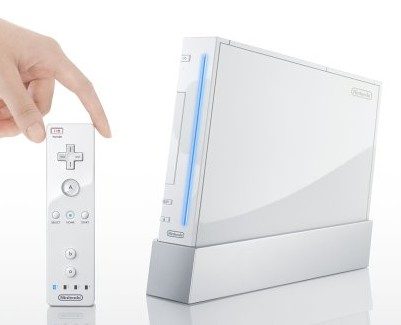 Why Nintendo hasn’t embraced this is completely beyond me. Johnny Chung Lee, a human-computer interaction researcher, developed an ingenious head tracking system that works with the Wii — a system which has an install base of more than 80 million units. Lee’s setup allows the head of the player to be tracked, which means that the system can adjust the images on the screen to the movement of the player, creating a portal into a virtual world (skip ahead to 2:45 if you want to bypass the explanation and see it in action):
Why Nintendo hasn’t embraced this is completely beyond me. Johnny Chung Lee, a human-computer interaction researcher, developed an ingenious head tracking system that works with the Wii — a system which has an install base of more than 80 million units. Lee’s setup allows the head of the player to be tracked, which means that the system can adjust the images on the screen to the movement of the player, creating a portal into a virtual world (skip ahead to 2:45 if you want to bypass the explanation and see it in action):
[youtube=http://www.youtube.com/watch?v=Jd3-eiid-Uw]
The effect is more convincing than what I’ve seen from 3D TVs which is a little bit sad (for the 3D TVs) if I do say so.
Lee has done all of the work for Nintendo short of boxing up a little Wii-mote stand and some LED equipped goggles. The company could easily take this setup, which uses nothing but the components already included with every Wii, and create (or encourage third-party developers to create) some very interesting games that take advantage of this cheap-but-accurate head tracking. This is hardware, capable of some basic virtual reality, that’s already been distributed to a mainstream market. It simply isn’t being used for VR…yet. And the conclusion once again: all the pieces of the puzzle are here, someone just needs to put them together.







Pingback: Virtual Reality Needs to Take off Because It Gets Grounded in a Niche Market « Road to Virtual Reality()